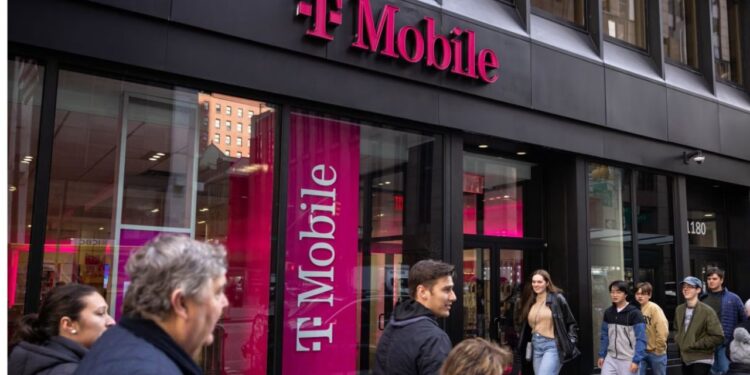In August 2021, a massive cyberattack hit T-Mobile, exposing the personal data of over 76 million customers in the U.S. This breach compromised highly sensitive information such as full names, dates of birth, addresses, Social Security numbers (SSNs), and even unique mobile identifiers. As a result, millions of customers faced an increased risk of identity theft and fraud.
A class-action lawsuit was filed in 2022, arguing that the breach resulted from T-Mobile’s failure to adequately protect customer data. While T-Mobile denied wrongdoing, the company agreed to a $350 million settlement, making it one of the largest data breach settlements in recent history.
With payouts set to begin in April 2025, here’s everything you need to know about the breach, who was responsible, and what steps you can take to protect yourself.
What Data Was Exposed?
The T-Mobile breach compromised highly sensitive personal and financial information, including:
- Full names and dates of birth
- Home addresses
- Social Security numbers (SSNs)
- Driver’s license information
- IMEI and IMSI numbers (unique identifiers linked to mobile devices and networks)
This kind of information is a goldmine for cybercriminals, increasing the risks of identity theft, fraudulent activities, and phishing scams.
How Much Will Customers Receive?
T-Mobile’s $350 million settlement aims to compensate affected customers for their losses. Payments will begin after April 1, 2025, and the compensation amount varies based on individual circumstances.
There are three main ways customers can claim:
- Up to $25,000 for documented financial losses
- If you can prove that the breach directly led to financial losses (e.g., fraudulent charges, unauthorized loans), you may be eligible for reimbursement.
- $25 per hour for lost time (up to 15 hours)
- If you had to take steps to protect yourself, such as freezing accounts, filing fraud claims, or dealing with financial institutions, you can claim compensation for your time.
- Reimbursement for lost wages
- If you had to miss work due to the data breach, you could be compensated based on your hourly wage.
For customers who did not experience direct financial loss, a smaller one-time payout may be available, depending on their state of residence.
Who Was Behind the Cyberattack?
The cyberattack was carried out by John Binns, a 21-year-old hacker living in Turkey. Binns admitted to breaching T-Mobile’s systems and selling the stolen data.
He described T-Mobile’s security as “awful”, explaining that he had access to the company’s systems for weeks without being detected.
How Did the Breach Happen?
Binns gained entry through a misconfigured testing gateway—a security oversight that left T-Mobile’s internal network vulnerable. Once inside, he was able to escalate access and retrieve vast amounts of customer data.
This breach was not the first for T-Mobile, as similar incidents had occurred in previous years. The attack exposed weaknesses in T-Mobile’s security practices, leading to scrutiny from cybersecurity experts and regulators.
How to Protect Yourself After a Data Breach
If your information was exposed in the T-Mobile breach—or any other cyberattack—here are key steps to reduce your risk of fraud:
- Use Strong, Unique Passwords
- Avoid reusing passwords across different accounts. Consider using a password manager to generate and store complex passwords securely.
- Freeze Your Credit
- A credit freeze prevents identity thieves from opening new accounts in your name. You can request a freeze from major credit bureaus:
- Equifax: www.equifax.com
- Experian: www.experian.com
- TransUnion: www.transunion.com
- A credit freeze prevents identity thieves from opening new accounts in your name. You can request a freeze from major credit bureaus:
- Watch for Phishing Attempts
- Cybercriminals may use your leaked data for phishing scams. Be cautious of emails, texts, or calls requesting personal information. Never click on suspicious links.
- Monitor Your Financial Accounts
- Regularly check your bank accounts, credit reports, and statements for any unauthorized activity. Report any suspicious transactions immediately.
- Enable Two-Factor Authentication (2FA)
- Strengthen account security by enabling 2FA wherever possible. This adds an extra layer of protection against unauthorized access.
What’s Next for T-Mobile?
Following the cyberattack, T-Mobile has invested $150 million to improve data security. The company has implemented measures such as:
- Multi-Factor Authentication (MFA) for employees
- A Zero-Trust Security Model (requiring continuous verification)
- Enhanced network monitoring to detect threats faster
While these security upgrades are a step in the right direction, the breach has damaged T-Mobile’s reputation and customer trust. It also serves as a warning to other companies about the consequences of poor cybersecurity practices.
Final Thoughts
The T-Mobile data breach was one of the largest in recent years, affecting millions of customers. While T-Mobile has taken steps to strengthen security, the incident highlights the growing risks of cybercrime and identity theft.
If you were affected, you may be entitled to compensation under the class-action lawsuit. It’s crucial to stay vigilant, secure your accounts, and take preventative measures to protect your personal information.
As data breaches become more frequent, companies and consumers alike must prioritize cybersecurity and proactive protection against future attacks.
FAQs:
1. When will I receive my T-Mobile settlement payment?
Payments are set to begin after April 1, 2025, for eligible customers who filed claims.
2. How do I check if I was affected by the breach?
If you were a T-Mobile customer in August 2021, your data may have been compromised. You can visit T-Mobile’s official website or the settlement claims portal for more details.
3. Can I still file a claim?
The deadline to file a claim may have already passed, but check the official lawsuit website to confirm.








